Vietnamese Coffee History, Types, And Production
by Bryan Albuquerque
Welcome to Coffee Culture Worldwide, the Vietnamese edition.
In this article, you can discover the short history of Vietnamese coffee, witness why the Vietnamese economy is bursting with coffee beans, discover the creamy, milky coffees made in Vietnam (and a coffee made with egg, yuck!), and what’s with the coffee coming out of the East Orient?
Just like Indonesian coffee producers, the Vietnamese also have a coffee made from poo.
The History
Coffee was introduced to Vietnam by the French in 1857.
The land was quickly cultivated into plantations with the intention to develop steady cash crops (i.e. for the purpose of economic gain and not for personal sustenance).
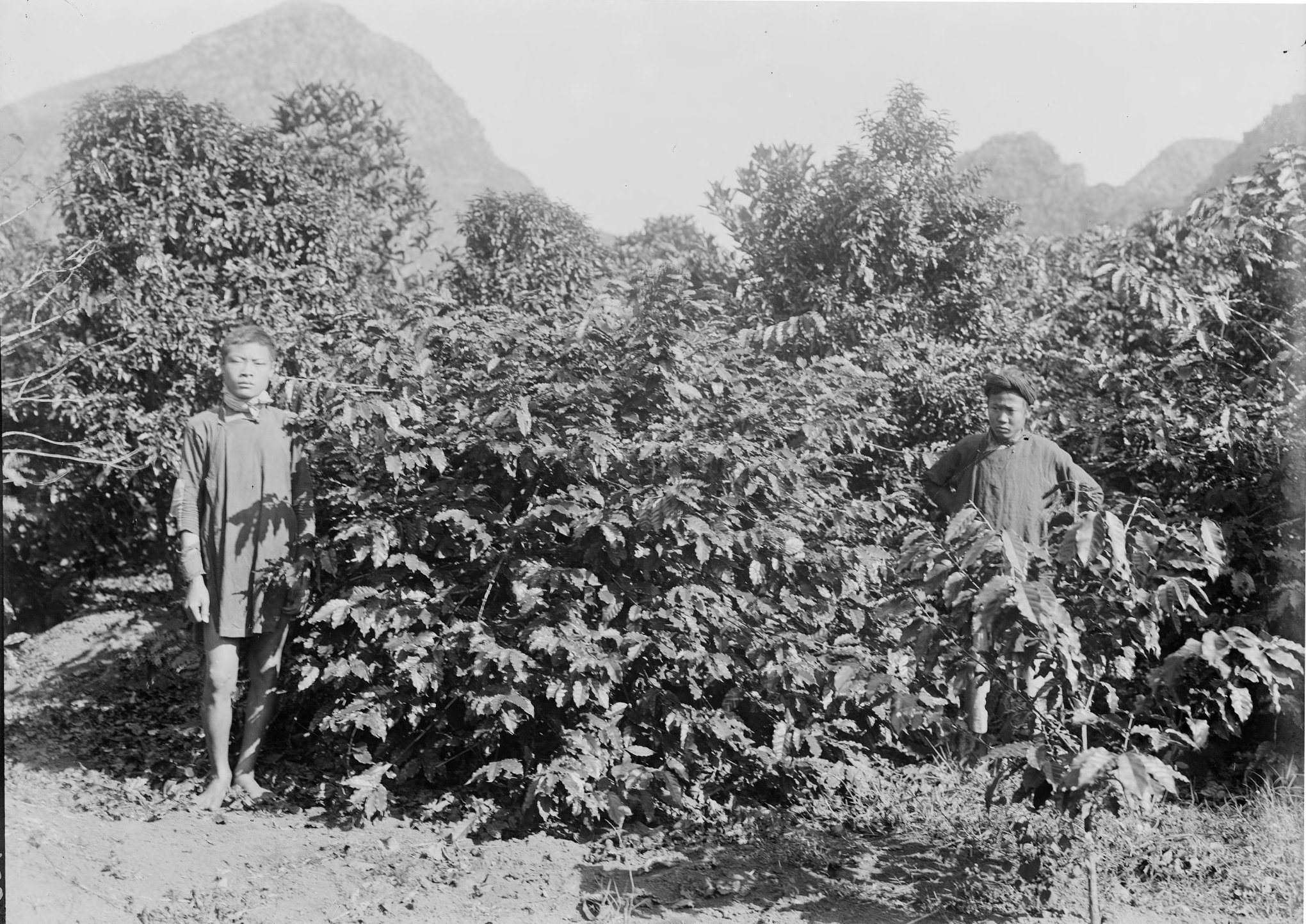
Coffee production in Vietnam boomed since it’s beginnings. In fact, Coffee became Vietnam’s major economic contributor.
However, coffee production was disrupted due to the Vietnam War. While the area which majority of the Vietnamese coffee grew was not affected by the war, Buôn Ma Thuột region, the people were.
Depopulation caused significant stalling in the production of Vietnamese coffee.
Even when the war was over, coffee production was limited due to governmental restraints which limited private enterprise.
It wasn’t until 1986 that privately owned enterprises were permitted again. Following that decision, coffee production flourished.
Today, Vietnam exports almost 1 million tonnes of coffee. Coffee is the second leading agro product coming out of Vietnam, rice being the first.
Vietnamese Coffee Production
As mentioned, coffee production in Vietnam is privately owned with a few state owned plantations.
Some of the big names in this business include Hung Phat Company Ltd., Viet Pacific Co. Ltd. (i.e. Vietcoffee), and Vinacoffee (Vietnam National Coffee Corporation).
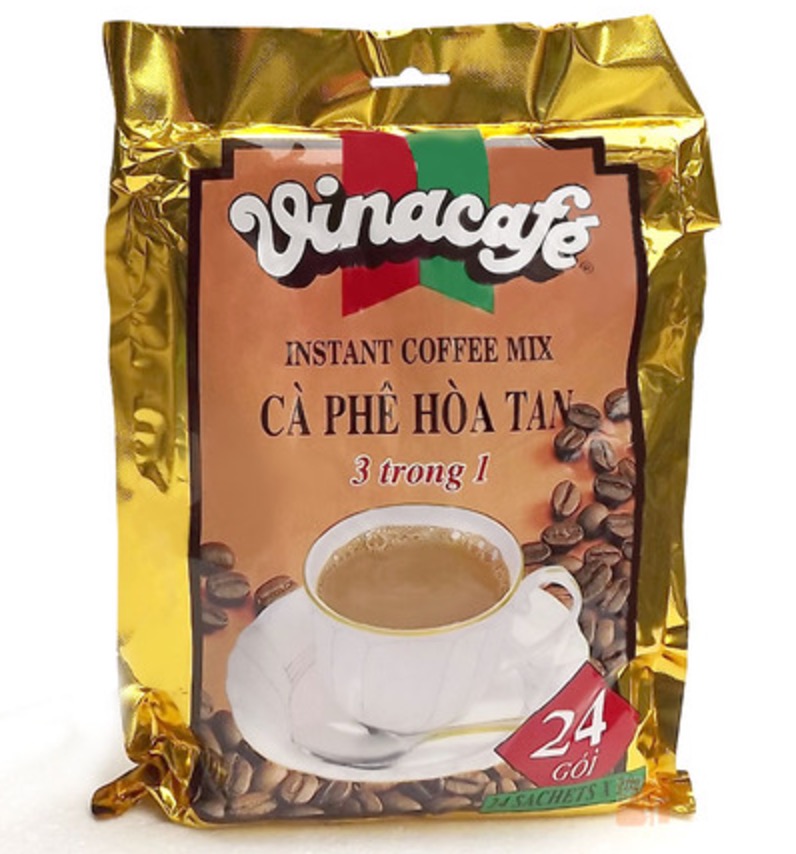
The plantations of Vietnam are meant to produce a high yield of coffee in the shortest amount of time. Vietnamese coffee producers have been scaling up production to outcompete their competitors.
However, the bean that Vietnam produces is often considered to be inferior. About 97% of Vietnam’s coffee comes from Robusta.
Robusta coffee is known to be low-acidity and extremely bitter and is commonly used for instant coffee and fillers for coffee blends.
In comparison to the Arabica coffee plant, Robusta is easier to care for, less susceptible to disease, has a greater crop yield, double the caffeine, and more antioxidants.
Overall, Vietnam contributes to over 40% of the world’s Robusta bean production!
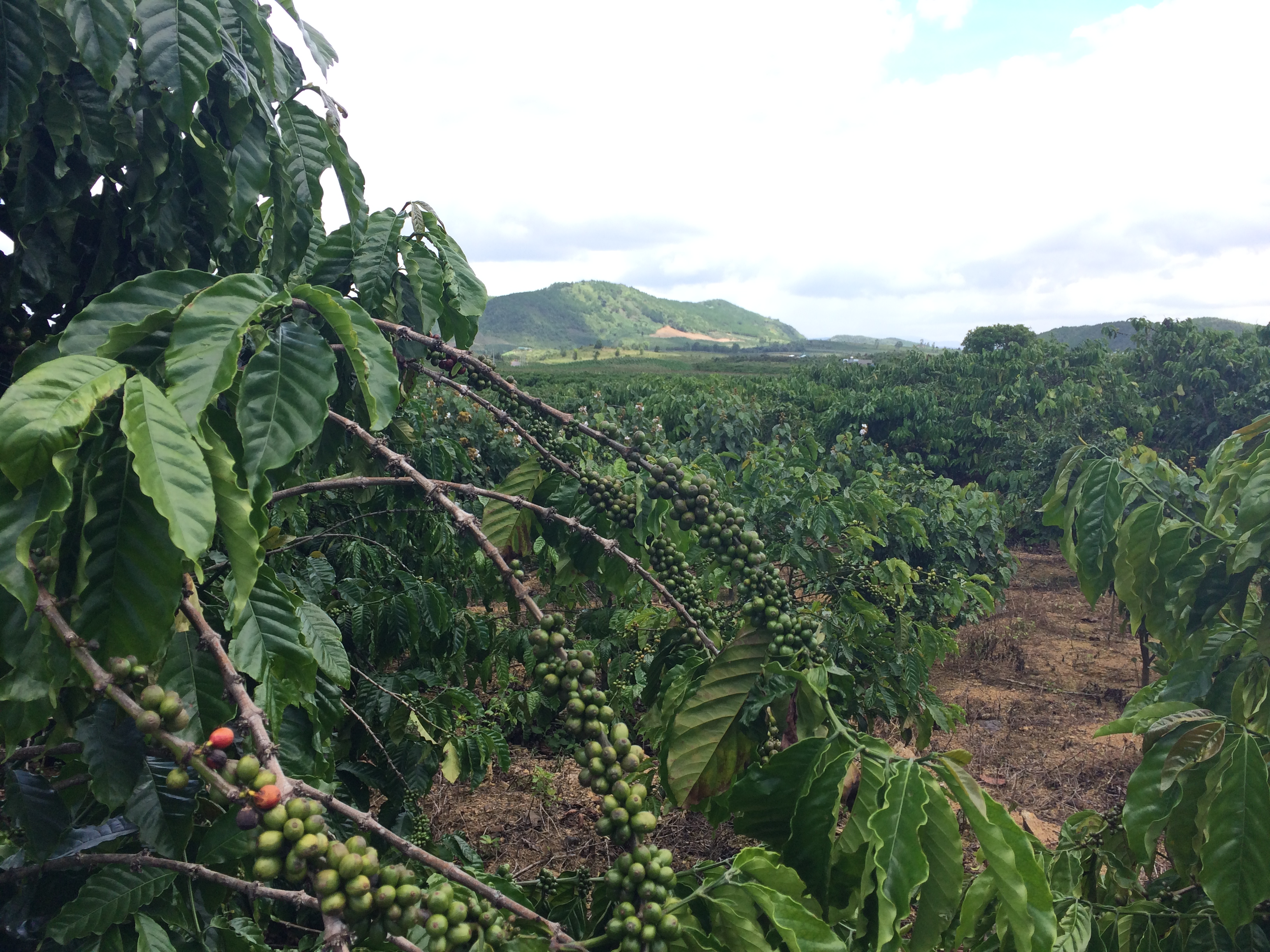
Vietnamese Coffee Filter
Before revealing a few of the delicious types of coffee you can enjoy from Vietnam, let’s take a look at the infamous, Vietnamese Coffee filter.
This gravity, insert coffee filter is easy to use and quick to clean up. Just place the filter on top of a cup, pack it full of some fine ground Vietnamese coffee, let the piping hot water flow through and enjoy.
Traditional filters are made from stainless steel and is commonly used to make the Cà phê sua dá (keep reading to learn about this).
Note: With no paper filter, all the essential oils from the bean go straight in your cup. If you don’t know already, Vietnamese coffee is known to be extremely potent. Drink responsibly.
Vietnamese Coffees
If you recall, coffee plays a significant part in the Vietnamese economy. This being so, Vietnam’s coffee culture is something special to explore.
Here are just a few of the coffees you might find if you travelled to Vietnam:
Cà Phê Sữa Nóng / đá (Vietnamese milk coffee hot / iced)

To make the Cà Phê Sữa, Vietnamese milk coffee, you must place the filter mentioned filled with coarse coffee grains on top of a cup filled with a little condensed milk.
They say in Vietnam that certain brands of condensed milk delivers a better taste than others. For the best flavor, condensed milk that contains only milk and sugar will make you the best cup.
The coffee drips slowly into the cup and gradually mixes with the condensed milk. It is said that the sweetness balances the strong bitter taste.
The coffee served in this style is typically made in a little glass cup. If you’re expecting a massive cup of coffee served in your oversized coffee mug, you may at first be disappointed.
However, when you try the strong rich flavours mixed with the sweet milky taste, you’re likely to find your senses delighted.
Watch this video about how to make yourself some Cà Phê Sữa.
Bac Xiu (Coffee, Condensed Milk, Coconut)
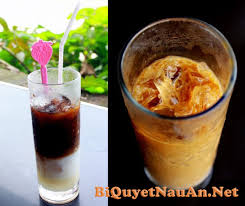
If the last coffee concoction had your mouth watering, this one will make it flood.
The Bac Xiu is a coffee concoction consisting of coffee, condensed milk and coconut. The Bac Xiu is made in a similar style as the Cà Phê Sữa however, coconut milk is added.
Unlike the Cà Phê Sữa, the Bac Xiu is less sweet while filled with coconut flavours.
If you’re looking to escape the heat, sometimes this Vietnamese coffee is made over frozen coconut yoghurt to create a coconut coffee smoothie.
Watch this video to learn how to make some delicious Bac Xiu.
Cà Phê Trứng (Vietnamese Egg Coffee)
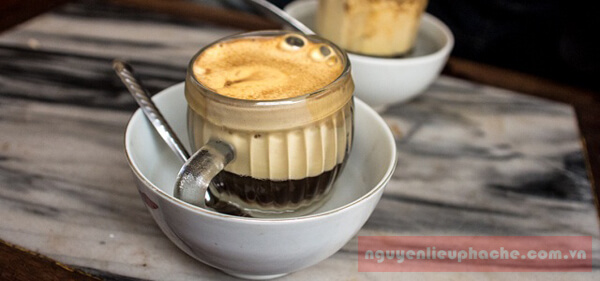
Perhaps having an egg in your coffee may be the turning point in your caffeine beverage intake and could possibly turn you away from coffee forever.
But wait, it’s not as strange as dropping raw eggs in your gut just to build some muscle.
The Cà Phê Trứng is made by whipping raw egg yolks and condensed milk together.
Then, the coffee is poured using the traditional coffee filter creating a rich, creamy coffee treat.
If you’re wondering about the taste, some have called this the cadbury cream egg of coffee. Why aren’t eggs being put in every coffee?
Here’s a video showing how to make the famous Cà Phê Trứng.
Vietnamese Cat Poop Coffee?
Look, this topic is covered extensively throughout this blog, and it continues to come up again and again when venturing into the Eastern Asian coffee scene.
To spare you the potentially traumatizing thought of sipping coffee made from poo, here is a separate article dedicated entirely to this fecal founded specialty drink. Just click here to read about the poop coffee.
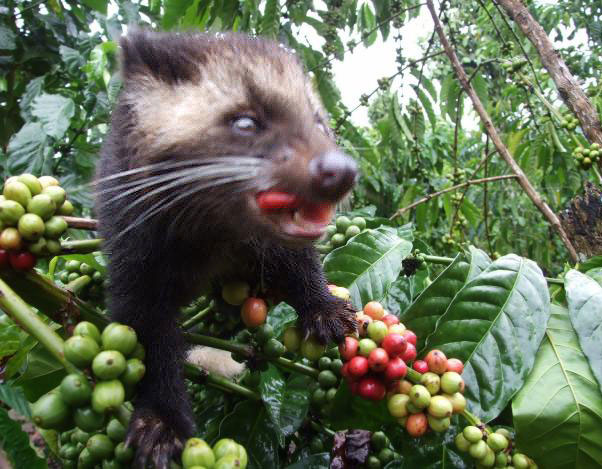
Final Thoughts
Vietnamese coffee has a very special culture. When work is finished friends and loved ones flock to their favorite cafes to sip on delicious, creamy coffee.
Coffee in Vietnam is both a social symbol and a delicious treat.
If you want to try Vietnamese coffee, find yourself a Vietnamese filter, get a canned of condensed milk, and your favorite Arabica/Robusta blend of Vietnamese coffee. Enjoy!
 |
 |
 |
 |

About Bryan Albuquerque
Bryan Albuquerque is a coffee lover and vaping advocate who writes reviews and information about coffee accessories and KYG. A former coffee addict, Bryan traded his morning fix for an electronic cigarette in an effort to quit smoking, and has never looked back. He's dedicated to helping others make the switch to vaping, and believes that it's one of the best decisions anyone can make for their health.
Thoughts on "Vietnamese Coffee History, Types, And Production"
 |
 |
 |
 |
Get FREE Coffee Gifts now. Or latest free grinders from our best collections.
Disable Ad block to get all the secrets. Once done, hit any button below
 |
 |
 |
 |